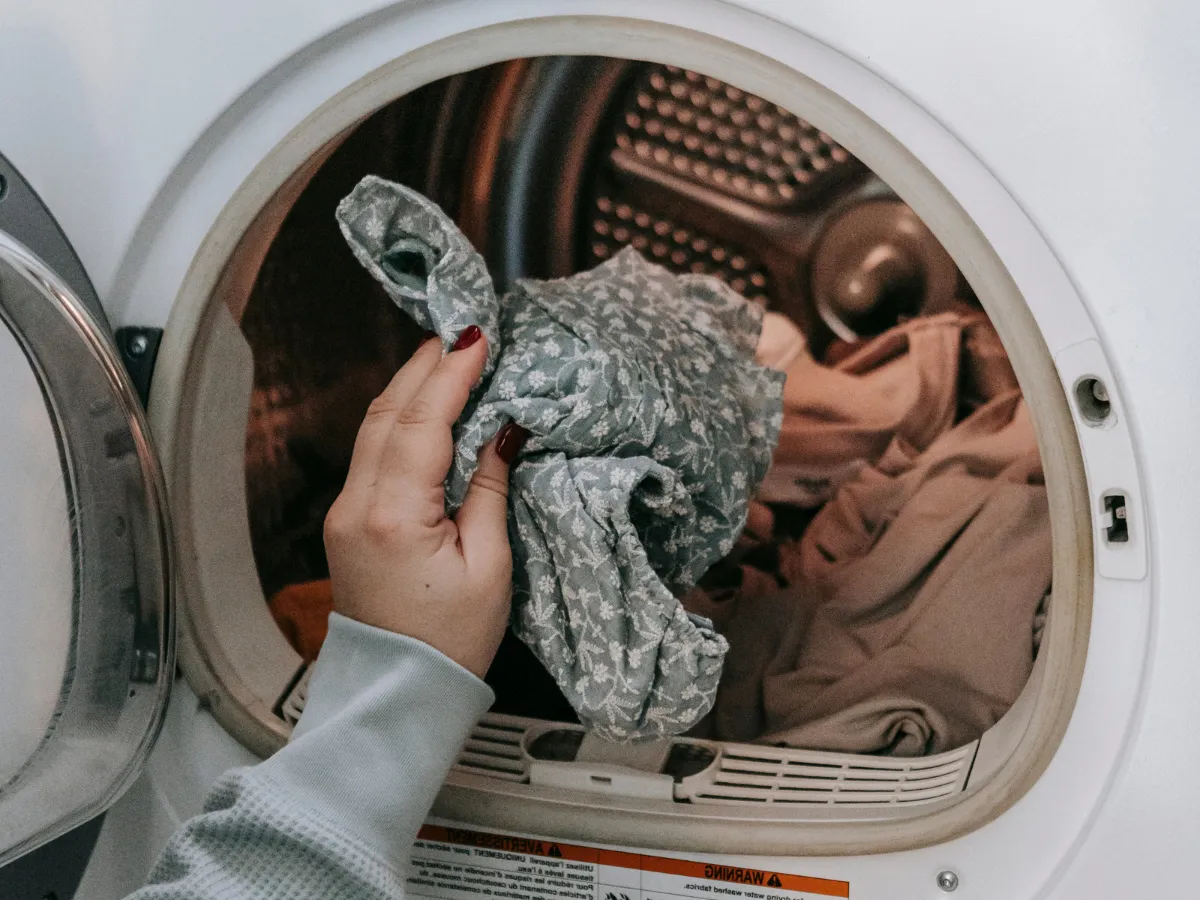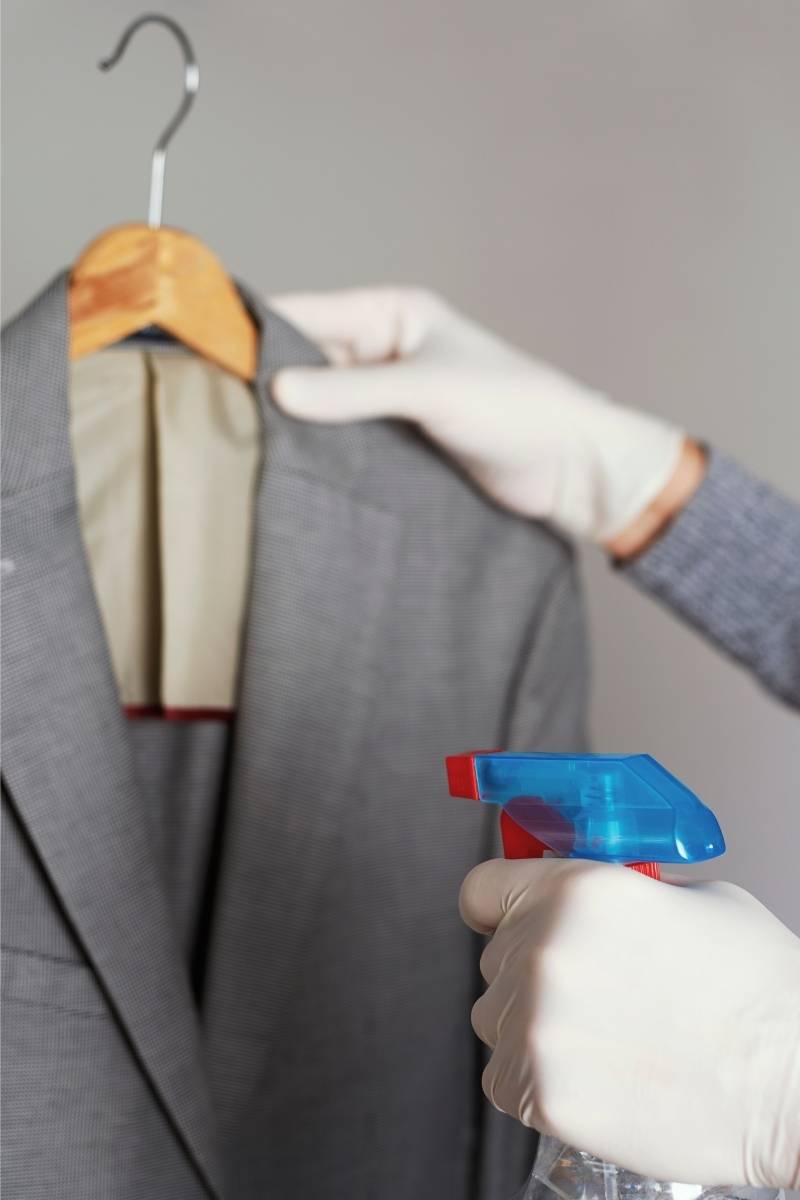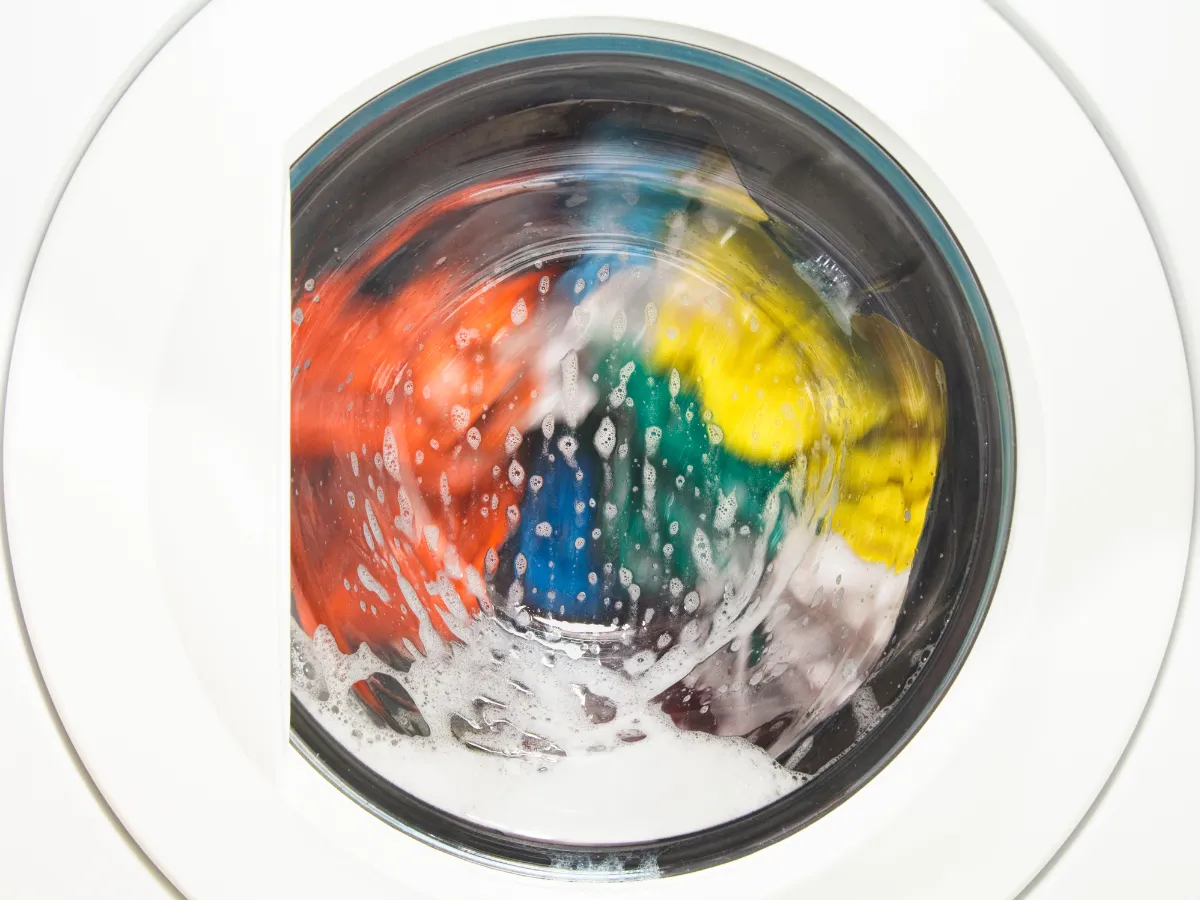Complete Guide: How to Disinfect Clothes in the Washing Machine (Goodbye Germs!)

Washing clothes removes visible dirt and many germs, but is it enough to completely disinfect them? In certain situations, such as after an illness, when washing baby clothes, work uniforms exposed to contamination, sweaty sportswear, or simply to ensure deep hygiene in bedding and towels, we need to go a step further. Learning how to disinfect clothes in the washing machine correctly helps us effectively eliminate potentially harmful bacteria, viruses, fungi, and other microorganisms.
Fortunately, several methods exist to achieve truly hygienic laundry, from harnessing the power of temperature to using specific products or natural alternatives. In this guide, we'll explain the most effective and safe options so your clothes are not just clean, but also disinfected.
Why (and When) Should You Disinfect Your Clothes?
Disinfection goes beyond aesthetic cleaning. It's important for:
- Eliminating Pathogens: Bacteria (like E. coli, Staphylococcus), viruses (flu, norovirus), and fungi (causing athlete's foot or mold) can survive on fabrics.
- Preventing Contagion: Especially crucial if someone at home has been sick, to avoid spreading germs through shared clothing or bedding.
- Combating Persistent Bad Odors: Often, odors that don't wash out normally are caused by bacteria feeding on sweat and dirt. Disinfection eliminates them at the root. Ideal for sportswear.
- Hygiene for Baby and Children's Clothes: Their immune systems are more vulnerable, so disinfecting their clothes (as we explain here) and stuffed animals is advisable.
- Bedding and Towels: Accumulate dead skin cells, sweat, and moisture, a breeding ground for mites and bacteria. Disinfecting them periodically is good practice.
- Work Uniforms: Especially in sectors like healthcare, hospitality, or personal care.
Method 1: The Power of Heat (Thermal Disinfection)
This is the simplest and one of the most effective ways, provided the fabric allows it.
- The Magic Temperature: 60°C (140°F) or Higher. Washing clothes at 60 degrees Celsius or more for a full cycle is sufficient to kill the vast majority of bacteria, viruses, and dust mites.
- Which Clothes Can Handle It? Mainly sturdy 100% cotton or linen items (sheets, towels, cotton underwear, kitchen towels).
- Check the Label!: It's essential to verify that the garment can withstand this temperature. Washing clothes at 60°C that aren't meant for it can cause shrinking, deformation, or color damage. Consult our guide to washing labels.
- Specific Programs: Some washing machines have "Hygiene," "Anti-Allergy," or "Steam" cycles that maintain high temperatures consistently for optimal disinfection.
If you need to wash bulky items like comforters at high temperatures, the large-capacity machines at a self-service laundromat are ideal.

Method 2: Chemical Disinfectants (With and Without Bleach)
When you can't use high temperatures (colored clothes, delicate fabrics, synthetics), chemical disinfectants are the solution.
A. Bleach (Sodium Hypochlorite): Power with Precautions
Bleach is a very potent and economical disinfectant, but with significant limitations.
- Use: Exclusively for white clothing made of durable fabrics (cotton, linen) that indicate bleach tolerance on the label (empty triangle symbol).
- Application: NEVER directly on clothes. Use the specific bleach compartment of the washer or dilute it well in cold water before adding to the cycle (cold or lukewarm water, max 40°C/104°F, is usually sufficient). Follow recommended doses.
- Risks: Discolors colored clothes, yellows some fibers, damages fabrics like wool, silk, or lycra, and excessive use weakens fibers. Do not mix with other products. More details on how to use bleach.
B. Bleach-Free Laundry Sanitizers: The Versatile Option
These are the ideal alternative for disinfecting colored, delicate clothing, or when you can't/don't want to use bleach. They work even in cold water.
- What Are They?: Liquid products (like Lysol Laundry Sanitizer, Dettol Laundry Cleanser) formulated with bactericidal and fungicidal agents (often benzalkonium chloride or other quaternary ammonium compounds) that don't harm colors or most fabrics.
- How to Use?: Generally added to the fabric softener compartment, so they work during the final rinse. Always follow the manufacturer's instructions and dosage.
- Effectiveness: Eliminate up to 99.9% of bacteria, fungi, and some viruses, even at low temperatures (20-30°C / 68-86°F).
- Advantages: Safe for almost all clothes (check label just in case), easy to use, effective in cold water, eliminates bad odors.
C. Oxygen Bleach (Sodium Percarbonate)
Although its main function is whitening, the active oxygen released by percarbonate when dissolved in warm/hot water also has disinfectant properties (especially against bacteria and fungi).
- Use: Add 1-2 tablespoons to the drum along with detergent. Works best at 40°C (104°F) or higher.
- Ideal for: White or light-colored durable clothes needing both whitening and disinfection.
- Caution: Not recommended for wool, silk, or very dark/delicate colors without testing first.
It's a great option for restoring whiteness while disinfecting.
Method 3: Natural Alternatives (Milder Disinfection)
If you prefer more natural options or seek lighter disinfection for everyday use:
- White Vinegar: Add 1 cup to the wash cycle or softener compartment. It's a mild disinfectant (especially against some bacteria and mold), deodorizes, and softens. Safe for most fabrics and colors. Learn more about cleaning with vinegar.
- Baking Soda: Add half a cup to the drum. Helps clean, deodorize, and has slight antibacterial properties. Boosts detergent action.
- Tea Tree Essential Oil: Known for its potent antibacterial and antifungal properties. Add about 10-15 drops to your liquid detergent or directly into the drum. Has a characteristic strong scent.
Important: These natural methods are less potent than heat or specific chemical disinfectants, especially against viruses. They are good for maintenance, odors, or if you seek an eco-friendly option, but if you need deep disinfection (e.g., after illness), opt for heat or specific products.
Good Practices for Hygienic Laundry
- Don't Shake Dirty Laundry: Avoid dispersing germs into the air. Put it directly into the wash.
- Wash Your Hands: After handling heavily soiled clothes or clothes from sick individuals.
- Don't Overload the Washer: Allow water and disinfectant to circulate well.
- Clean Your Washer Regularly: Prevent it from becoming a breeding ground for bacteria and mold. Run empty cleaning cycles with bleach or vinegar. Pay special attention to the door seal and the detergent drawer. Learn how to clean inside the washer.
Drying: An Ally in Disinfection
- High-Temperature Dryer: If the garment allows, using the dryer on high heat after washing adds an extra layer of disinfection.
- Sun Drying: The sun's UV rays have a natural germicidal effect. Hanging clothes in the sun is an excellent way to finish the disinfection process.
- Complete Drying: Ensure clothes are totally dry before storing to prevent mold growth.
Frequently Asked Questions about Disinfecting Clothes
How do you disinfect clothes in the washing machine?
By washing at 60°C+ (140°F+), using bleach (whites), specific laundry sanitizers (color-safe & cold-effective), or milder alternatives like vinegar.
How can I sterilize clothes in the washing machine?
Full sterilization is difficult. High-level disinfection is achieved with heat (60°C+/140°F+) or bleach. Laundry sanitizers kill 99.9% of germs.
What is the best disinfectant for clothes?
Depends: Bleach (powerful, whites), percarbonate (oxygen, whites/light colors), bleach-free sanitizers (versatile, color, cold), vinegar (mild, natural).
What disinfectant can I use in a washing machine?
Bleach (with caution), liquid laundry sanitizers, sodium percarbonate, white vinegar.
Disinfecting clothes in the washing machine is an important step to ensure hygiene and prevent the spread of germs, especially under certain circumstances. Choose the method that best suits the fabric type and your needs, and enjoy truly clean and safe laundry!
Total and Professional Disinfection at LaColada!
Need to ensure maximum hygiene for your laundry? At LaColada Self-Service Laundry Ponferrada, we make it easy. Our industrial washing machines reach temperatures of 60°C (140°F) or more, ideal for eliminating mites and bacteria from bedding and towels. Plus, our system automatically includes active oxygen in every wash, a powerful disinfectant and stain remover safe for most fabrics and colors. Get deep disinfection and professional results at LaColada!
Wash and Disinfect with Us!More Laundry Information

How to Wash Dark Clothes in Washer and Preserve Color
Tricks to prevent your black and dark garments from fading.

How to Wash White Clothes in Washer Correctly
Keep your whites pristine with the right programs and products.

Prewash in Washing Machine: When to Use It and What For?
Discover the usefulness of the prewash cycle in your laundry.